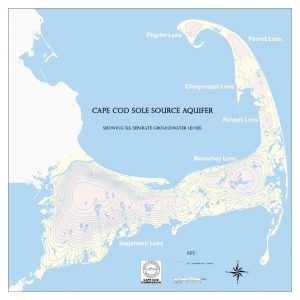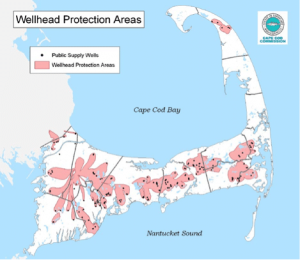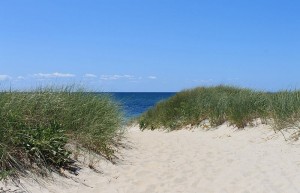 Memorial Day is the generally accepted start of summer to most New England communities. Pools are opened, grills are wheeled out from storage, flowers are planted, and beaches are officially opened. And while summer is absolutely breathtaking in New England, it is also a time of increased stress on water quality and supply.
Memorial Day is the generally accepted start of summer to most New England communities. Pools are opened, grills are wheeled out from storage, flowers are planted, and beaches are officially opened. And while summer is absolutely breathtaking in New England, it is also a time of increased stress on water quality and supply.
Water Quality
Defined by the EPA as a sandy, pebbly, or rocky shore of a body of water, beaches provide recreation for approximately 100 million United States residents over the age of 16 each year. Families flock to beaches during the summer months to enjoy activities such as swimming, surfing, boating, fishing, parasailing, exploring, walking, and sunbathing. Beaches not only include the sandy expanses with boardwalks and cottage rentals along the coastline, but also lake and riverfront areas, ponds, estuaries, and lagoons, some of which are even found in urban areas. Beaches are also an integral part of the the United States economy and provide habitat to many species.
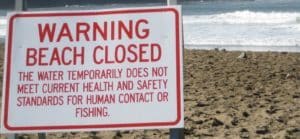 Unfortunately, because of the huge popularity of beaches in the summer, water quality can suffer. Beach closures are common during the summer months, and are a result of pollutants and pathogens entering the water. One of the most common sources of water pollution is human fecal matter from leaky septic systems and sewer overflows. Human waste contains a variety of harmful organisms, including bacteria, viruses, and parasites, that can cause illnesses such as gastroenteritis, hepatitis, and skin infection to humans. Another source of pollution is animal fecal matter from agricultural and stormwater runoff. While runoff contains a number of pollutants including motor oil, pesticides, fertilizers, and trash, arguably the most dangerous and disruptive is animal feces. A single gram of dog feces contains over 23 million parvovirus bacteria in addition to whipworms, hookworms, roundworms, threadworms, giardia, and coccidian. These pathogens and parasites enter waterways through runoff and can have detrimental effects on waterways, aquatic life, and humans.
Unfortunately, because of the huge popularity of beaches in the summer, water quality can suffer. Beach closures are common during the summer months, and are a result of pollutants and pathogens entering the water. One of the most common sources of water pollution is human fecal matter from leaky septic systems and sewer overflows. Human waste contains a variety of harmful organisms, including bacteria, viruses, and parasites, that can cause illnesses such as gastroenteritis, hepatitis, and skin infection to humans. Another source of pollution is animal fecal matter from agricultural and stormwater runoff. While runoff contains a number of pollutants including motor oil, pesticides, fertilizers, and trash, arguably the most dangerous and disruptive is animal feces. A single gram of dog feces contains over 23 million parvovirus bacteria in addition to whipworms, hookworms, roundworms, threadworms, giardia, and coccidian. These pathogens and parasites enter waterways through runoff and can have detrimental effects on waterways, aquatic life, and humans.
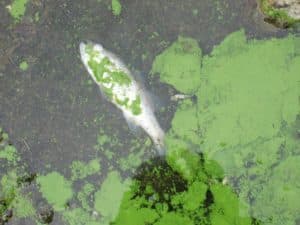
Algal blooms are also more common in summer months. Algal blooms are caused by a variety of sources including warmer temperatures, high light, and increased turbidity, but the most contributive source is nutrients in the water from human and animal waste. Some algal blooms are extremely dangerous and have the potential to sicken or kill humans and animals, while less toxic blooms still cause harm to local economies and the environment. Commonly referred to as red tide, cyanobacteria, or blue-green algae, algal blooms effectively cause dead zones in the water and often require significantly increased treatment costs to remedy.
Water Supply
In addition to water quality issues at beaches, water supply can also be a concern. Since the population at popular vacation spots such as Cape Cod and the Maine beaches increases astronomically in the summer months, so does the demand for water. And not only are these seasonal visitors doing laundry, cooking, and drinking the water — they are also watering their lawns and gardens, which accounts for over half of a household’s total water usage. It is therefore understandable how a small community’s water supply can easily become taxed during the high summer season.
Solutions
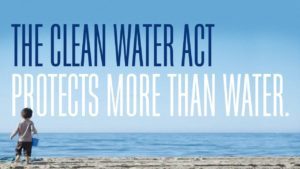 Fortunately, there are policies and regulations in place that directly address seasonal water quality and quantity issues. The EPA, along with other governmental agencies, have enacted several laws that aim to protect the quality of our nation’s beaches:
Fortunately, there are policies and regulations in place that directly address seasonal water quality and quantity issues. The EPA, along with other governmental agencies, have enacted several laws that aim to protect the quality of our nation’s beaches:
The Clean Water Act
The Clean Water Act, established by the EPA in 1971, establishes the basic structure for regulating discharges of pollutants into the waters of the United States and regulating quality standards for surface waters. Under the Clean Water Act, the following programs specifically address water pollution:
The National Pollutant Discharge Elimination (NPDES) Permit Program
The NPDES program controls water pollution by regulating point sources that discharge pollutants into waters of the United States.
The Pollution Budgeting (TMDL) Program
The TMDL program requires states, territories, and authorized tribes to develop lists of impaired waters, establish priority rankings for waters, and develop Total Maximum Daily Loads (TMDLs). TMDLs related to beaches include pathogens, nutrients, and trash.
The Beaches Environmental Assessment and Coastal Health (BEACH) Act of 2000
The BEACH Act amends the Clean Water Act to better protect public health at our nation’s beaches. The BEACH Act requires EPA to recommend water quality criteria that states, territories, and tribes can adopt into their water quality standards for pathogens and pathogen indicators in coastal recreational waters. The BEACH Act also authorizes grants to states, territories, and eligible Tribes to monitor coastal and Great Lakes beaches and to notify the public when water quality standards are exceeded.
Marine Debris Research, Prevention, and Reduction Act (MDRPRA)
The MDRPRA established programs within the National Oceanic and Atmospheric Administration (NOAA) and the United States Coast Guard (USCG) that identify, determine sources of, assess, reduce, and prevent marine debris. MDRPRA also reactivates the Interagency Marine Debris Coordinating Committee, chaired by NOAA.
The Coastal Zone Management Act
The Coastal Zone Management Act is administered by NOAA, Office of Ocean and Coastal Resource Management (OCRM), and provides for management of the nation’s coastal resources, including the Great Lakes.
The Act to Prevent Pollution from Ships (APPS)
The APPS implements the provisions of Marpol 73/78, the International Convention for the Prevention of Pollution From Ships, 1973 as modified by the Protocol of 1978. (“Marpol” is short for marine pollution.) In 1987, APPS was amended by the Marine Plastic Pollution Research and Control Act. The MPPRCA requires EPA and National Oceanic and Atmospheric Administration (NOAA) to study the effects of improper disposal of plastics on the environment and methods to reduce or eliminate such adverse effects. MPPRCA also requires EPA, NOAA, and the U.S. Coast Guard (USCG) to evaluate the use of volunteer groups in monitoring floatable debris.
Shore Protection Act (SPA)
The SPA is applicable to transportation of municipal and commercial wastes in coastal waters. The SPA aims to minimize debris from being deposited into coastal waters from inadequate waste handling procedures by waste transporting vessels. EPA, in consultation with the Coast Guard, is responsible for developing regulations under the SPA.
Marine Protection, Research, and Sanctuaries Act (MPRSA)
The MPRSA, also called the Ocean Dumping Act, generally prohibits the following:
- Transportation of material from the United States for the purpose of ocean dumping;
- Transportation of material from anywhere for the purpose of ocean dumping by U.S. agencies or U.S.-flagged vessels; and
- Dumping of material transported from outside the United States into the U.S. territorial sea.
In addition to the numerous governmental regulations protecting water quality and our nation’s beaches, local communities also implement policies that specifically aim to address water supply issues. Some of these include the following:
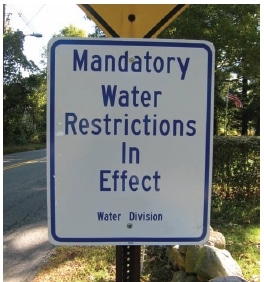 Outdoor water restrictions and bans: Many communities implement water bans in the summer that severely limit or prohibit outdoor watering.
Outdoor water restrictions and bans: Many communities implement water bans in the summer that severely limit or prohibit outdoor watering.- Public education: Many summer communities implement public outreach that includes requests for voluntary conservation.
- Leak detection and repair: Because water loss is such a serious issue across the United States, many communities are actively implementing leak detection and repair policies. Repairing older infrastructure typically has an exponential return on investment and also serves as a means of public education, with repair crews in the street garnering local media attention.
In Conclusion
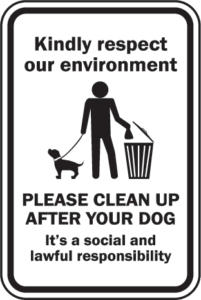 Beaches are one of the most traditional and enjoyable means of summer entertainment for families and individuals, and they provide a plethora of recreational activities for all ages. Protecting our beaches and recreational waters is imperative to the health of our nation’s citizens and economy, and we are fortunate that our nation’s governmental agencies and local communities proactively work to maintain the health of our waters. We as individuals can also help to protect our beaches and waterways by reducing our personal water consumption, cleaning up after our pets, and being mindful of pesticide and fertilizer usage. Together, we can assure that present and future generations are able to enjoy our nation’s beautiful beaches.
Beaches are one of the most traditional and enjoyable means of summer entertainment for families and individuals, and they provide a plethora of recreational activities for all ages. Protecting our beaches and recreational waters is imperative to the health of our nation’s citizens and economy, and we are fortunate that our nation’s governmental agencies and local communities proactively work to maintain the health of our waters. We as individuals can also help to protect our beaches and waterways by reducing our personal water consumption, cleaning up after our pets, and being mindful of pesticide and fertilizer usage. Together, we can assure that present and future generations are able to enjoy our nation’s beautiful beaches.
Surf’s up!

